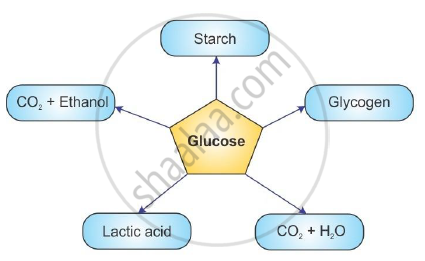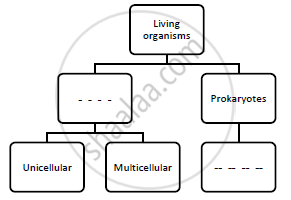Advertisements
Advertisements
प्रश्न
Give scientific reason.
Kreb's cycle is also known as citric acid cycle.
उत्तर
- Acetyl-CoA (2 carbon compound) enters the mitochondria to combine with oxaloacetic acid (4 carbon compound) and form a six-carbon compound i.e., citric acid.
- Since citric acid is the first stable compound formed, Krebs cycle is also called the citric acid cycle.
संबंधित प्रश्न
Given below are the end products of different reactions involving glucose. Write the appropriate end product in front of the following:

(1) Anaerobic reaction =
(2) Reaction in human muscles =
(3) Aerobic respiration
(4) Reaction in plant cells =
(5) Reaction in liver =
Name the life process of an organism that helps in the growth of its population.
Why is diffusion insufficient to meet the oxygen requirements of multi-cellular organisms like humans
What are outside raw materials used for by an organism?
Match the organisms given in column I with the processes given in column II:
| Column I | Column II | ||
| (i) | Leech | (a) | Holozoic nutrition |
| (ii) | Amoeba | (b) | Autotrophic nutrition |
| (iii) | Mushroom | (c) | Parasitic nutrition |
| (iv) | Green plant | (d) | Saprophytic nutrition |
Match the terms in column I with those in column II :
| Column I | Column II | ||
| (i) | Trypsin | (a) | Liver |
| (ii) | Amylase | (b) | Gastric glands |
| (iii) | Bile | (c) | Pancreas |
| (iv) | Pepsin | (d) | Saliva |
Match the terms in column I with their uses in column II
| Column I | Column II |
| (i) Heart | (a) Pipes for transport in humans |
| (ii) Arteries and Veins | (b) Clotting of blood |
| (iii) Xylem vessels | (c) Pumping organ |
| (iv) RBC | (d) Water transport in plants |
| (v) Platelets | (e) Carrier of oxygen |
Name the green dot like structures in some cells observed by a student when a leaf peel was viewed under a microscope. What is this green colour due to?
Complete the following flowchart.
Fill in the blank and explain the statement.
Our muscle cells perform ______ type of respiration during exercise.
Write definition.
Nutrition.
Write definition
Nutrients
Write the definition.
Proteins
Distinguish between Glycolysis and TCA cycle.
Answer in detail.
How all the life processes contribute to the growth and development of the body?
Answer in detail.
Explain the Kreb's cycle with reaction.
Why is there a difference in the rate of breathing between aquatic organisms and terrestrial organisms? Explain.
Find an odd one out.
What are the main energy sources of living organisms?
Explain the Steps of Glycolysis.
Assertion: When air is passed through lime water, lime water turns milky.
Reason: Air contains 78% nitrogen and 21% oxygen.
How do the guard cells regulate opening and closing of stomatal pores?
Why do fishes die when taken out of water?
Match the words of Column (A) with that of Column (B)
| Column A | Column B |
| Phloem | (i) Excretion |
| Nephron | (ii) Translocation of food |
| Veins | (iii) Clotting of blood |
| Platelets | (iv) Deoxygenated blood |
In each of the following situations what happens to the rate of photosynthesis?
- Cloudy days
- No rainfall in the area
- Good manuring in the area
- Stomata get blocked due to dust
Match the terms in Column (A) with those in Column (B)
| Column (A) | Group (B) |
| (a) Trypsin | (i) Pancreas |
| (b) Amylase | (ii) Liver |
| (c) Bile | (iii) Gastric glands |
| (d) Pepsin | (iv) Saliva |
Explain the following concept in short:
Balanced Diet
Give scientific reason.
Cell division is one of the important properties of cells and organisms.
Classify vitamins according to their solubility.
Give one example of each of the classifications of vitamins.
